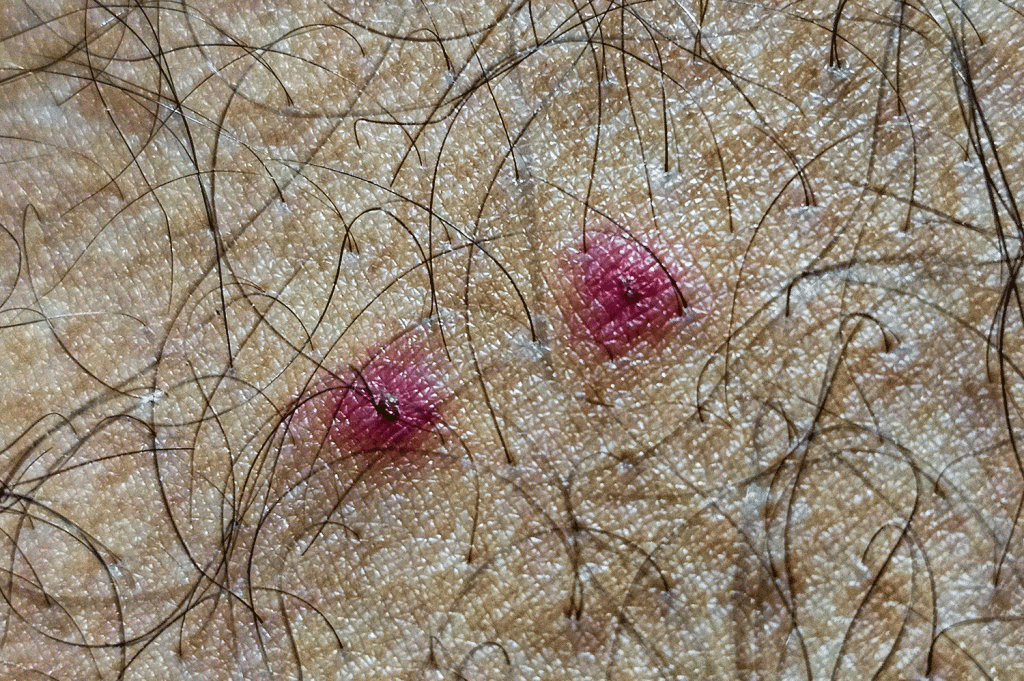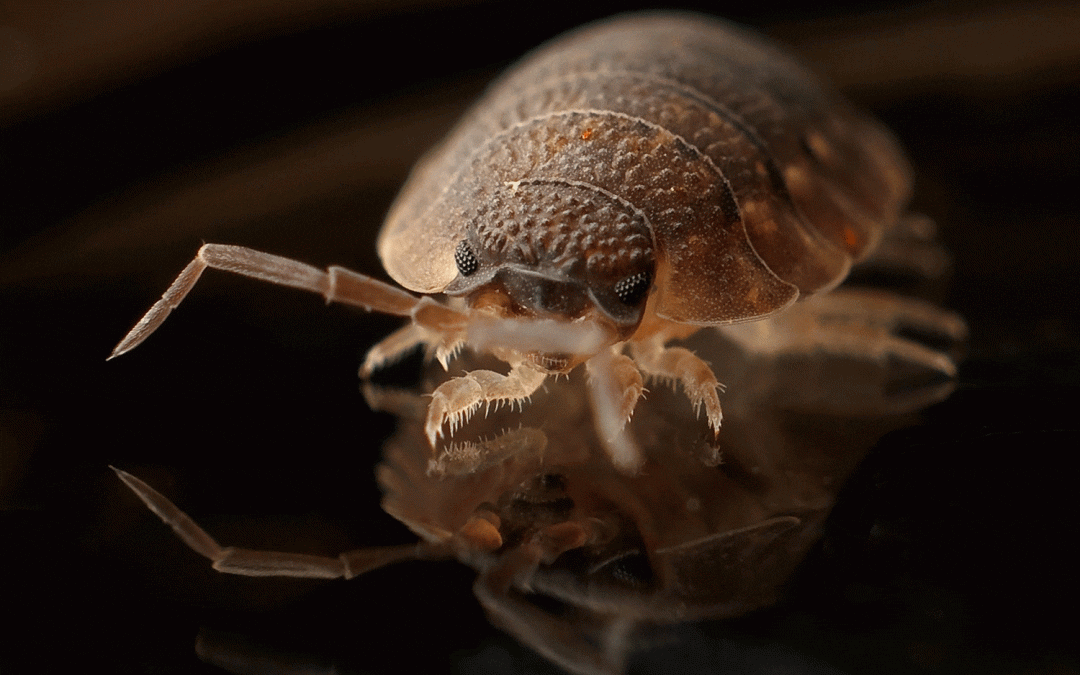10 Ways To Check Your Hotel And Airbnb For Bed Bugs
Bed bugs are a common nuisance, especially in hotels. These small, elusive pests can make your stay uncomfortable and, worse still, you may unwittingly bring them back home with you. Understanding what bed bugs look like, how to check for them, and what to do if you encounter them is crucial. Lets find out how to check your hotel room and Airbnb for bedbugs.
How To Recognize Bed Bugs
Recognizing bed bugs can be a bit of a challenge due to their tiny size and elusive nature. Adult bed bugs are approximately the size of an apple seed, about 5-7 millimeters in length. They have a flat, oval-shaped body that is reddish-brown in color. After a blood meal, their bodies swell and become more elongated. Bed bugs do not have wings, so they cannot fly or jump. They move by crawling quickly.
However, identifying bed bugs isn’t just about spotting the bugs themselves. They leave behind signs that indicate their presence. One of these signs is their droppings, which appear as tiny black spots on your mattress, bedding, or nearby furniture. This is essentially digested blood and can give a somewhat sweet, musty odor. You might also find shed skins, which are the molted exoskeletons of the bugs as they grow. These shed skins look like lighter, empty versions of the bugs.
In addition to droppings and shed skins, another sign of a bed bug infestation is their eggs. Bed bug eggs are very small, about the size of a pinhead, and are pearly white in color. They are often found in dark, secluded spaces such as the seams of mattresses, between cushions, or behind baseboards. Spotting these signs early can help you take prompt action and prevent a full-blown infestation.
How To Check For Bed Bugs
- Inspect the Bed: Start with the bed as it’s the most common place for bedbugs. Check the mattress, particularly the corners and seams, for any signs of bugs, small black spots (bug feces), or blood stains.
- Check Bed Linens and Pillows: Look closely at the sheets, pillowcases, and any other bedding for signs of bedbugs. This includes tiny black dots, blood smears, or the bugs themselves.
- Examine Upholstered Furniture: Bedbugs can also hide in chairs, couches, and other upholstered furniture. Check the seams, folds, and cushions carefully.
- Look Behind the Headboard: The headboard is another common hiding spot. If possible, try to look behind it or ask hotel staff for assistance.
- Inspect the Nightstands: Check inside and around the drawers of nightstands as bedbugs can hide in the tiny cracks and crevices.
- Check the Luggage Rack: Before you unpack, inspect the luggage rack thoroughly. Bedbugs can easily hitch a ride on your luggage.
- Examine the Closet: Don’t forget to check inside the closet, especially any cracks in the walls or floor.
- Look Around the Baseboards: Bedbugs often hide in the gaps between baseboards and the wall or floor. Use a flashlight if necessary to get a better look.
- Check Curtains and Drapes: Inspect the seams, folds, and hems of any curtains or drapes in the room.
- Use a Flashlight: Bedbugs can be hard to see, so using a flashlight can help. Shine the light into dark corners, crevices, and behind furniture to ensure you don’t miss any potential hiding spots.
When checking for bed bugs, it’s important to know where they typically hide. Bed bugs prefer dark, secluded spots close to their primary food source – you. Start your inspection with the bed. Pull back the sheets and check the mattress, paying close attention to the seams and edges. Look for live bugs, small black droppings, or tiny white eggs. Also, inspect the box spring and headboard, if possible.
Don’t stop at the bed, though. Bed bugs can also take up residence in furniture, especially those with upholstery. Check the seams and folds of any chairs or couches in the room. Look behind headboards, wall hangings, and loose wallpaper. They can also hide in the cracks of wooden furniture, inside books, and in the crevices of electrical outlets.
Remember that bed bugs are excellent at hiding, and their eggs can be as small as a pinhead. Therefore, checking for bed bugs requires a keen eye and patience. If you find signs of bed bugs, it’s crucial to take immediate action to prevent an infestation from spreading. Contact a pest control professional who can provide a thorough inspection and treatment plan.
How To Identify Bed Bug Bites

Identifying bed bug bites can be tricky as they often resemble bites from other insects or skin conditions. However, there are a few characteristics that can help you distinguish them. Bed bug bites usually appear as small, red, itchy welts on the skin. They often occur in a line or cluster, a pattern resulting from the bug biting multiple times while moving across the skin. Unlike flea bites that are typically around the ankles, bed bug bites can be on any area of skin exposed while sleeping.
Everyone reacts differently to bed bug bites. Some people may have no reaction at all, while others might experience severe itching or develop an allergic reaction. The bites can cause uncomfortable itching and may become swollen or blistered. It’s important not to scratch the bites as it can lead to infection.
It’s also worth noting that the reaction to a bed bug bite can be delayed, sometimes taking up to 14 days to appear. This makes it even more difficult to identify the source of the bites. If you suspect you’ve been bitten by bed bugs, it’s crucial to check your sleeping environment for signs of these pests. If you find evidence of an infestation, contact a pest control professional immediately.
Use Bed Bug Spray
Bed bug sprays are one of the common methods used to treat bed bug infestations. They come in various forms such as aerosols, liquids, or powders and contain different types of insecticides that are effective against bed bugs. Before using a bed bug spray, it’s essential to read and follow the manufacturer’s instructions. This will ensure you apply the product safely and effectively.
When using bed bug spray, focus on the areas where bed bugs are likely to hide. These include seams and folds of mattresses, box springs, bed frames, headboards, furniture, and any cracks or crevices in the walls or floors. The spray should be applied carefully and thoroughly to these areas. Remember, bed bugs are excellent hiders, so it’s crucial to treat all potential hiding spots to eliminate the infestation completely.
While bed bug sprays can be an effective part of your pest control strategy, they may not eliminate a bed bug infestation entirely, especially if the infestation is large or widespread. Bed bugs have developed resistance to many common pesticides, making some sprays less effective. Moreover, sprays often fail to reach bugs hidden deep within furniture or walls. Therefore, it’s usually best to combine sprays with other treatment methods, such as heat treatments or professional pest control services, for the best results.
Treating Bed Bugs Infestation
Exterminating bed bugs can be a challenging and tedious process. According to the US Environmental Protection Agency (EPA), it’s crucial to use EPA-registered pesticides that have bed bugs listed on the label. These products are designed specifically to target bed bugs and are proven to be effective in their elimination. However, extreme care is required when using these products, especially foggers or bug bombs, as they can be harmful if not used correctly.
Professional pest control services like Orkin and Terminix offer comprehensive bed bug treatment services. These professionals are trained to diagnose, treat, and remove bed bugs from homes. They work with homeowners to design a unique treatment plan tailored to the specific infestation. Terminix, for instance, offers a non-toxic RapidFreeze® solution that quickly and effectively freezes bed bugs, including eggs and nymphs, providing a safer alternative to traditional chemical treatments.
Non-chemical methods also play a vital role in exterminating bed bugs. These include washing bedding and clothes in hot water for 30 minutes and using a steamer on mattresses, couches, and other places where bed bugs hide. Vacuuming can also remove many bed bugs from mattresses and the exterior of box springs. However, it’s important to double-bag the vacuum bag after cleaning and dispose of it properly to prevent the bugs from escaping. Regardless of the method used, eradicating bed bugs often requires multiple treatments and constant vigilance to ensure all bugs, including eggs and nymphs, are eliminated.
How To Treat Bed Bug Bites On Skin
Treating bed bug bites primarily involves addressing the itching and inflammation associated with the bites. Over-the-counter treatments such as hydrocortisone cream or calamine lotion can help to reduce itchiness and inflammation. Applying a cold compress or ice pack to the bites can also help to soothe the skin and reduce swelling. It’s important to remember not to scratch the bites, as this can lead to further skin damage and potential infection.
In addition to over-the-counter treatments, there are several home remedies that can be used to alleviate the symptoms of bed bug bites. A paste made from baking soda and water can be applied to the bites to help reduce itching. Similarly, applying apple cider vinegar, witch hazel, or tea tree oil to the bites may also help to relieve itchiness and reduce inflammation. However, these should be used with caution as they can cause skin irritation in some people.
If symptoms persist or if you experience severe reactions such as fever, difficulty breathing, or blisters, it’s essential to seek medical attention. A healthcare provider may prescribe a stronger topical steroid or an oral antihistamine to manage the allergic reaction. In extreme cases, antibiotics may be necessary if the bites have become infected. Remember, treating the bites is only a temporary solution, and the best course of action is to eliminate the bed bugs from your environment.
Do Bed Bugs Spread Infectious Diseases
Bedbugs, scientifically known as Cimex lectularius, are small, parasitic insects that feed on the blood of humans and other warm-blooded animals. While they are notorious for their itchy bites and their ability to infest homes and hotels, their potential role in disease transmission has been a topic of much debate.
According to current scientific understanding, bedbugs are not known to transmit any infectious diseases between humans. Unlike mosquitoes which can transmit malaria or ticks that can spread Lyme disease, bedbugs do not appear to be vectors for any known pathogens. This means that, while a bedbug bite can be unpleasant and even cause allergic reactions in some individuals, it is not generally considered a health threat in terms of infectious disease transmission.
However, it’s important to note that bedbugs have been found to carry several pathogens in their bodies, including bacteria, viruses, and parasites. Studies have shown that bedbugs can harbor more than 45 different pathogens. But just because a bedbug carries a pathogen does not mean it can effectively transmit that pathogen to humans.
In order for an insect to be a competent vector of disease, it must not only ingest the pathogen but also maintain it within its body and then effectively pass it on during a bite. For many of the pathogens that bedbugs have been found to carry, this process either does not occur or has not been definitively proven to occur.
While bedbugs can cause discomfort and distress due to their bites and the psychological impact of an infestation, they are not currently considered a major vector of infectious diseases. However, research in this area is ongoing, and our understanding of these pests and their potential impacts on human health continues to evolve.
Prevent Bringing Bed Bugs Home From Hotel and Airbnb
Preventing a bed bug infestation begins with vigilance during your hotel stay. Upon arrival, conduct a thorough inspection of your room. Pay particular attention to the seams of mattresses and behind headboards, as these are common hiding places for bed bugs. It’s also a good idea to keep your luggage and personal items off the floor and away from potential bed bug hotspots, such as beds and upholstered furniture.
When you return home, it’s wise to unpack your belongings outside or in a designated area away from your living space. This provides an opportunity to inspect each item before bringing it into your home. If possible, use a bright light or even a magnifying glass to look for any signs of bed bugs on your items. Also, consider vacuuming your suitcase before storing it away to ensure no bed bugs are hiding in its folds or pockets.
Lastly, laundering your clothes immediately upon returning home can help eliminate any bed bugs that may have hitched a ride in your luggage. Use the highest heat settings that your clothes can handle for both washing and drying, as high temperatures are known to kill bed bugs. By incorporating these steps into your travel routine, you can significantly reduce the risk of bringing these unwanted guests into your home.
I must mention that you can run into a bed bug problem regardless if staying in a Hotel vs Airbnb. While the thought of bed bugs can be alarming, being informed and vigilant can help you deal with these pests effectively. So, don’t let the bed bugs bite on your next hotel stay!


